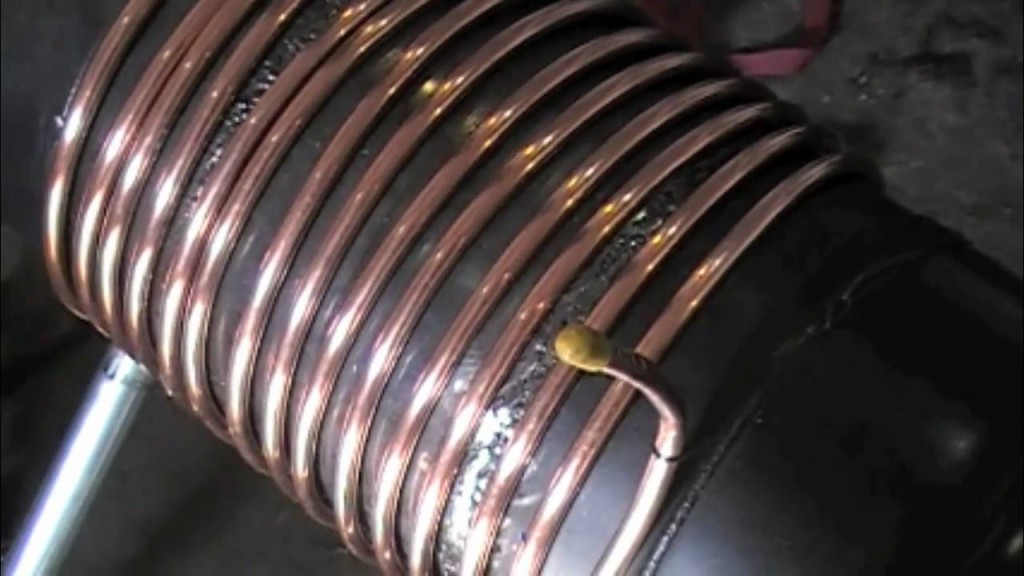There are a couple of ways that you can modify your wood stove to produce a steady supply of hot water. This makes for the perfect off-the-grid solution to generate hot water with out any electricity or natural gas. Let’s take a look at how easy it is to take advantage of this option, and you can implement it anywhere as long as you have a wood stove.
The basic idea around this system is to feed water through some copper pipe that is coiled around or against the wood stove. The intense heat that is present along the walls and exhaust pipe will be more than enough to produce very hot water on demand. It also requires minimal maintenance, and you can feed it directly into your existing water heater. Simply turn on the faucet as you would under normal circumstances and you’re good to go.
Building the Heater
You have a couple of options to consider based on your needs and preferences. You can place rows of copper pipe along a side wall of the stove, or you can coil it around the exhaust pipe. Both work really well, but the effectiveness of this system will depend on how much heat the stove generates as well as how much pipe you will be using.
Water will pass though the pipe and get heated when it comes into contact with the hot stove. The more pipe you can use will increase the overall surface area, and this will help to warm more water more quickly. Placing the pipe against the side wall of the stove near to where combustion is occurring will produce the hottest water. Wrapping the pipe around the exhaust will produce hot water, but temperatures will not be as high.
Coiling pipe is generally easier than making rows. To maximize effectiveness, you want to try and have the copper coil on the inside of the exhaust pipe. The most common option is to use a double-layered exhaust that has an inner and outer wall. You can remove the outer layer and place the pipe inside. The only thing you will need to do is bore holes at the top and bottom of the wall of the outer exhaust to feed through the ends of the copper coil. Attach the fittings, seal the spaces around the holes and replace the exhaust.
Wrapping the pipe around a side wall will require that you add brackets to the stove in order to secure the copper. Work from the bottom up by placing the copper horizontally along the wall. Bend it up 90 degrees at the end and place another row going in the opposite direction. Bend up again and repeat until you either run out of pipe or cover the surface of the wall. Be careful when bending the pipe so that you don’t crimp the corners to the point where the flow of water is impeded. You can also connect fittings and joints to each row if you don’t want to manually bend the pipe.
Attaching the Pipe
The next step is to attach the pipe to their respective connectors in your water system. One end needs to connect to an inflow pipe and the other will connect to the inflow pipe to the water heater. The idea is to create a closed-loop system that draws fresh water into the stove and releases hot water into the tank.
You should also include a shut-off valve between the inflow pipe and copper coil. This will help you to regulate the flow of water. This is important, but not necessary. Just keep in mind that controlling the flow of water will give it time to get as hot as possible before traveling to the water heater tank. Slow water will absorb more heat whereas fast moving water will only warm up a few degrees.
There is a lot of room for improvisation with this project, and it’s up to you to design a system that works best for you based on your stove and other factors. However, following these basic guidelines will give you access to an abundant and virtually hands-free supply of hot water. Try it for yourself and see how this can enhance your off-the-grid living situation. You can even use it now and save money on energy costs as well.
